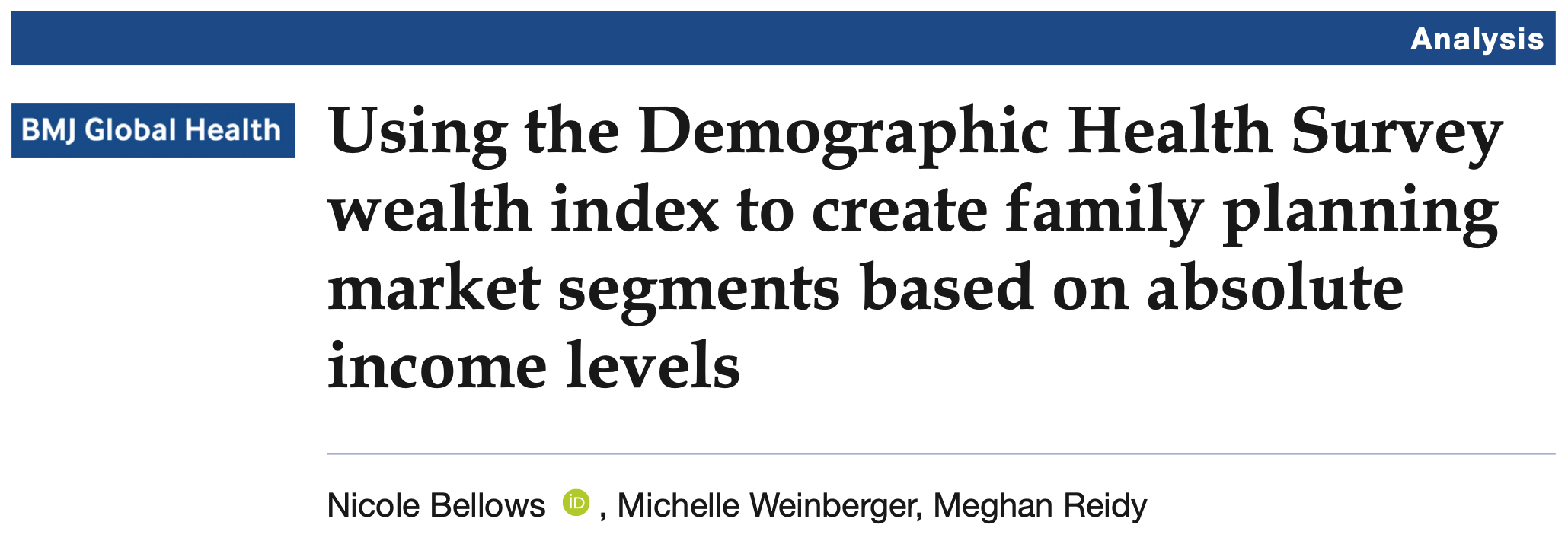Using the Demographic Health Survey wealth index to create family planning market segments based on absolute income levels
Original article published on BMJ Global Health on September 14, 2020.
Abstract
Family planning market segmentation approaches typically include analysis by wealth, particularly when considering whether individuals can afford out-of-pocket expenses in the private sector. Most commonly, this is done using the Demographic and Health Survey (DHS) wealth index, which uses a relative approach by summing household asset questions and categorising respondents into five groups from poorest to wealthiest within a country. In addition, the use of absolute measures, such as segmenting populations based on whether one lives below or above the International Poverty line, defined by the World Bank as US$1.90 per person per day, may provide further useful insights when designing strategies to ensure access to family planning. While such measures are not readily available in the DHS, a simple approach can be used to combine the wealth index and World Bank poverty lines to generate an absolute measure for an additional perspective when conducting family planning market segmentation. Family planning market size estimates were made for 24 low-income countries using wealth quintiles and World Bank poverty lines. The results show large variations in market size based on what measure is used, particularly for countries with a high density of poverty. Looking at both types of measures and understanding the reasons for the differences in market size estimates between the approaches can help lend a more nuanced understanding of the distribution of wealth and income in a country, leading to improved family planning market segmentation and ultimately to ensure more women have access to a method of their choice.
Click here to access the full journal article.
